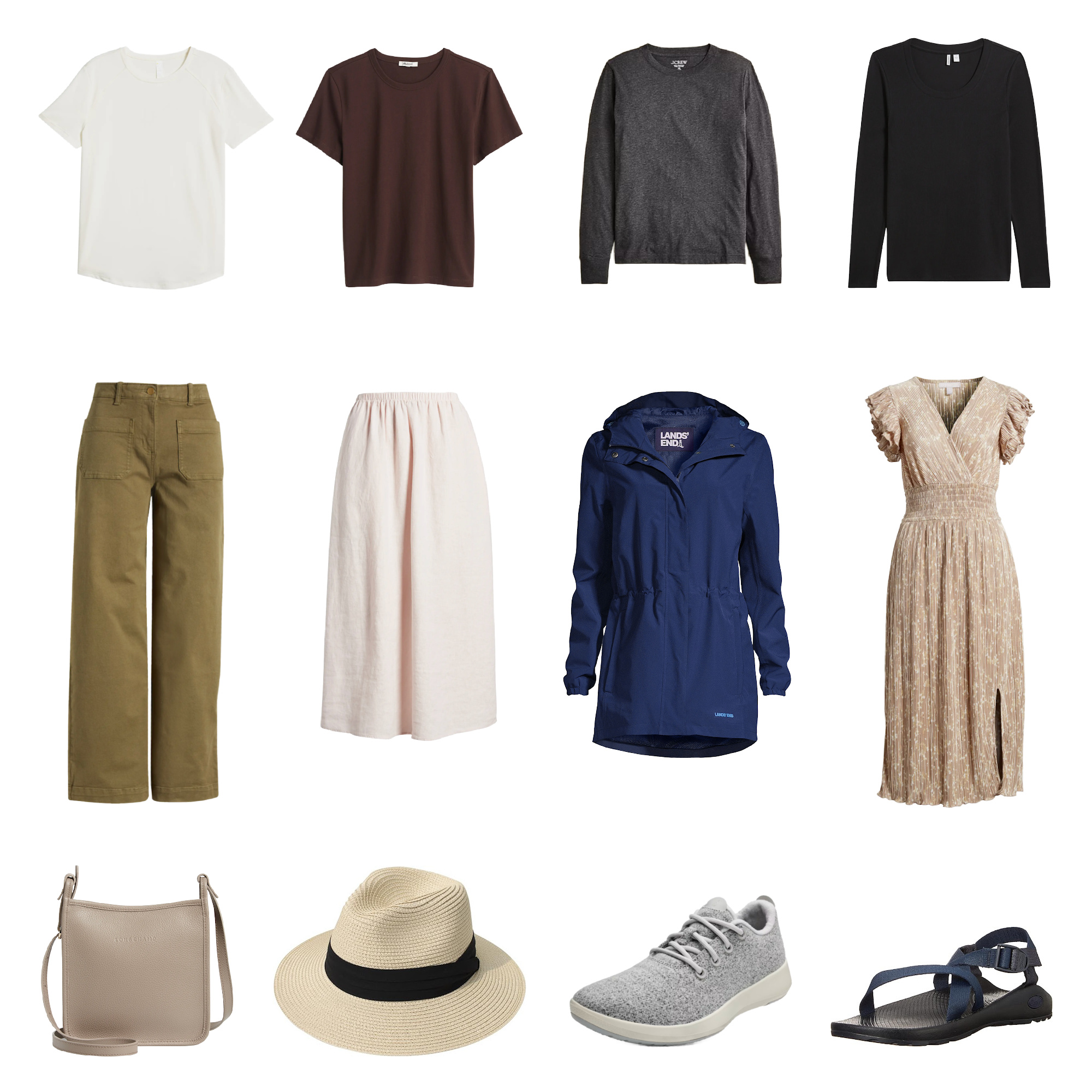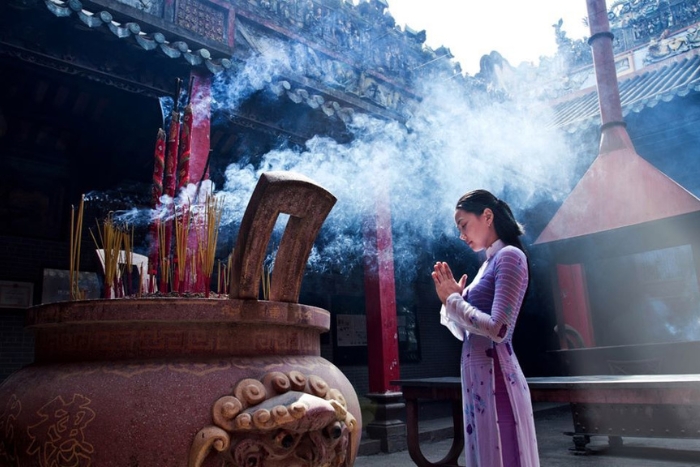
When planning a trip to Vietnam, especially in January, the question of what to wear in Vietnam in January can significantly enhance your travel experience. Vietnam’s weather varies drastically from north to south, and knowing how to dress appropriately is key to enjoying the stunning landscapes, vibrant markets, and rich culture without discomfort. This guide will walk you through the essential clothing choices, allowing you to enjoy the beautiful diversity of Vietnam in January.
Understanding Vietnam’s Climate in January

Vietnam experiences a unique climate in January that fluctuates based on the region. The north tends to be cooler and drizzly, while the central and southern parts offer warmer temperatures. Understanding these variations is crucial when considering what to pack.
Northern Vietnam: Cool and Damp Weather

In January, northern cities like Hanoi and Halong Bay often experience chilly temperatures ranging between 15-20°C (59-68°F).
The humidity during this time can also make it feel a bit colder than it actually is. Therefore, layering becomes essential to adapt to the shifting temperatures throughout the day.
Choosing the right fabrics can make all the difference in comfort level.
- Cotton: Breathable and soft, cotton clothing allows your skin to breathe even in damp conditions.
- Wool: A light wool sweater or cardigan can keep you warm during cooler evenings without making you feel too bulky.
- Water-resistant materials: Since drizzle is fairly common, lightweight water-resistant jackets can protect you from unexpected rain showers while keeping you dry and comfortable.
Southern Vietnam: Warm and Humid

In stark contrast, southern cities like Ho Chi Minh City can have temperatures soaring above 30°C (86°F) in January.
High humidity levels can make it feel even warmer, so choosing lightweight and breathable clothing is vital.
Selecting suitable clothing for the warmth and humidity in southern Vietnam is essential for your well-being.
- Linen: This fabric is known for its breathability and moisture-wicking properties, making it ideal for hot climates.
- Lightweight dresses or shorts: Opt for loose-fitting options that allow air circulation while providing comfort during outdoor activities.
- Sun protective clothing: If you plan on spending the day exploring, consider long-sleeved shirts and wide-brimmed hats to protect against the sun.
Central Vietnam: Variable Conditions

Central Vietnam experiences a transitional climate, with places like Hue and Da Nang experiencing mild conditions, typically around 20-25°C (68-77°F).
This region can also face unexpected rainfall, so preparedness is key.
Packing versatile outfits will prepare you for varying weather conditions.
- Layered ensembles: T-shirts paired with cardigans or light jackets are great since they can easily accommodate both warm and cool weather.
- Rain gear: Lightweight ponchos or foldable umbrellas are practical items to keep handy, especially if rain clouds loom on the horizon.
Packing Essentials for a Trip to Vietnam in January

Knowing what to wear in Vietnam in January goes beyond just selecting the right clothes; packing smartly can elevate your travel experience.
Here’s a look at some essential items to include in your luggage.
Footwear: Comfort Meets Functionality
Shoes play an important role in ensuring comfort during your travels.
- Comfortable walking shoes: Sneakers or sturdy sandals will support you during long days of exploration.
- Flip-flops or sandals: Useful when visiting beaches or relaxing after a day of sightseeing.
Accessories can enhance your comfort level while traveling.
- Scarves or shawls: These can serve multiple purposes—from warmth in cooler regions to sun protection in hotter areas.
- Sunhat and sunglasses: Protect yourself from direct sunlight while maintaining a stylish appearance.
Toiletries and Personal Care Items
While Vietnam offers many personal care products, bringing your preferred items can ensure familiarity in an exotic environment.
- Sunscreen: A must-have, especially in southern Vietnam where UV radiation is strong.
- Moisturizers: Transitioning between different climates can affect your skin; having a good moisturizer can provide relief from dryness.
Technology and Travel Gear
In our digital age, staying connected while traveling is essential.
- Portable charger: Keeps your devices charged during long sightseeing trips, ensuring you can capture all those wonderful moments.
- Travel guides or maps: While smartphones are convenient, having physical copies can sometimes save the day when internet service is spotty.
Cultural Considerations When Choosing Your Wardrobe

When traveling to Vietnam in January, it’s not only about comfort but also being respectful of local customs.
Understanding cultural nuances regarding clothing can enrich your travel experience.
Dress Code in Temples and Pagodas
Vietnam is home to numerous temples and religious sites, which often have specific dress codes.
- Modest attire: Long pants and sleeves are typically encouraged to show respect while visiting sacred spaces.
- Avoiding provocative clothing: It’s best to avoid overly revealing outfits that may offend local customs.
Being open to wearing traditional clothing can also enhance your cultural experience.
- Ao Dai: This flowing garment is iconic in Vietnamese culture and can be an exciting choice for women who wish to embrace the local style.
- Consider renting: In tourist-heavy areas, there are often shops where you can rent these traditional outfits for a day.
Seasonal Festivals and Events
January can also coincide with various local festivals.
Being aware of these events will help you select appropriate clothing for special occasions.
- Tet Festival: This lunar New Year celebration often involves vibrant displays and traditional costumes. Joining in the festivities may require special attire.
- Local celebrations: Check for any regional festivals or events happening during your stay, as they might provide an opportunity to engage more deeply with local culture.
FAQs

Will I need warm clothes in Vietnam in January?
Yes, especially in northern regions like Hanoi. Layering is key to adapting to the cooler temperatures.
Can I wear shorts in Vietnam in January?
Yes, you can wear shorts in southern Vietnam, where temperatures are warmer. However, consider wearing longer clothing when visiting religious sites.
Is it necessary to wear sunblock in January?
Absolutely! Even in January, the sun can be quite strong, particularly in southern Vietnam, making sunscreen essential for protecting your skin.
Should I bring an umbrella or raincoat to Vietnam in January?
Yes, a lightweight rain jacket or a travel-sized umbrella is advisable, especially in central Vietnam, where rain is possible.
What type of footwear is best for Vietnam in January?
Comfortable walking shoes or sturdy sandals are recommended for exploring the various terrains you’ll encounter.
Conclusion

Knowing what to wear in Vietnam in January is vital for a comfortable and enjoyable experience. By understanding the regional climates and cultural considerations, packing wisely, and selecting versatile clothing options, you’ll be well-prepared for your adventures. Embrace the beauty and diversity of Vietnam while staying comfortable and respecting local customs, and your journey will undoubtedly be unforgettable.
OTravel Vietnam | Ready to Start Your Adventure in Vietnam
• Phone: (+84) 816 616 466 (WhatsApp/ Zalo/ Viber)
• Email: OTravelVietnam@gmail.com
• Website: www.otravel.vn
• Facebook: facebook.com/OTravelVietnam / facebook.com/OTravelcom
At OTravel Vietnam, we provide seamless travel solutions to help you explore the beauty of Vietnam. From personalized tours to unforgettable experiences, we ensure every journey is memorable. Contact us today and let your adventure begin!”







